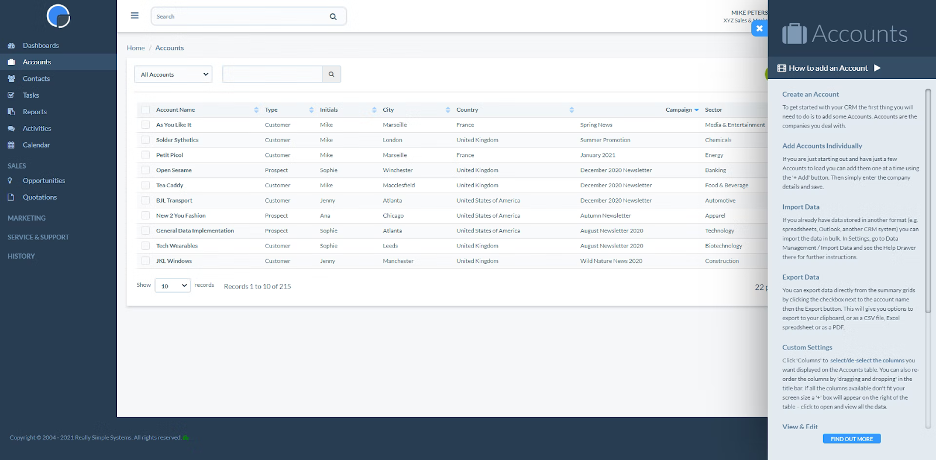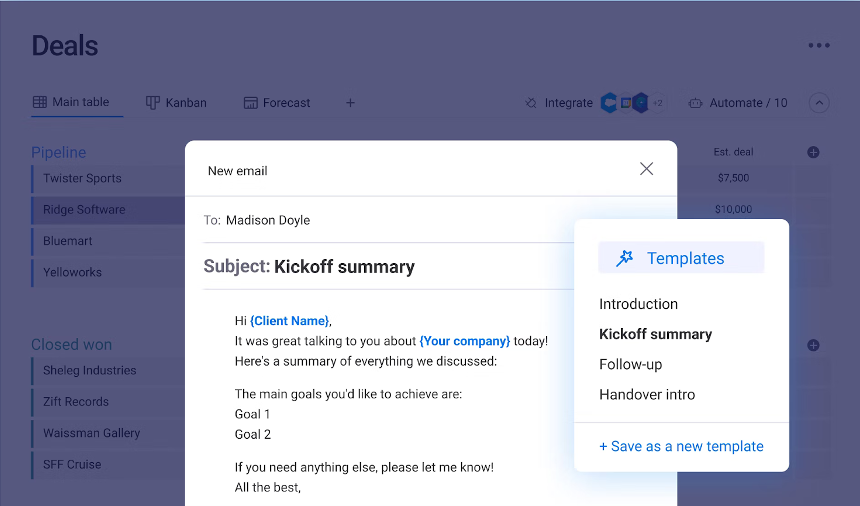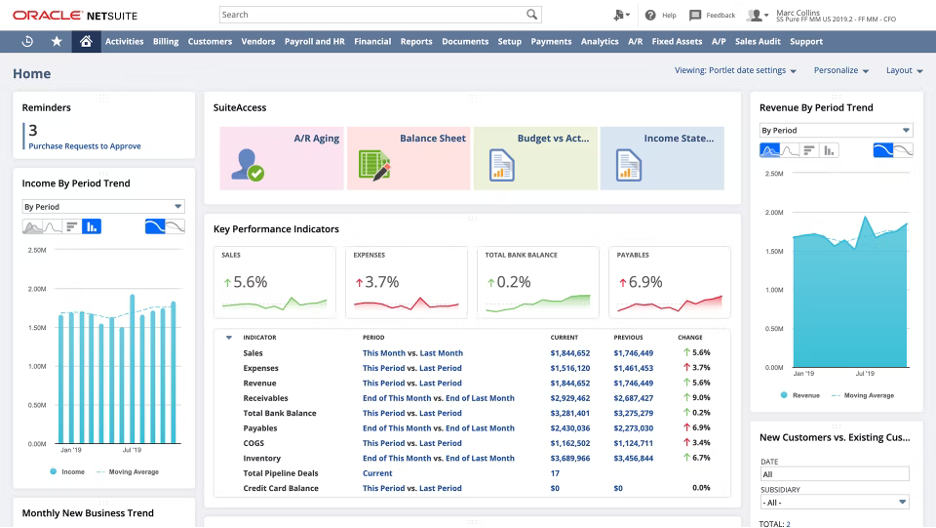A challenge can also be an opportunity. We’re here to help you take advantage.
Running a business is a complex undertaking no matter the size of the organization. There’s an incredible amount of data to account for to operate successfully, and the difference between merely surviving (or not) and becoming a leader in your field comes down to how you take advantage of that data.
The most important data when it comes to growing your business is the information you collect about your customers. Who they are, their wants and needs, how they interact with your business, and maybe even when they choose not to are all key puzzle pieces for making smarter, more strategic decisions.
As a small business owner making sense of the big picture to grow as responsibly as possible, how do you manage all this data? And more importantly, how do you harness it to achieve your goals? Maybe you haven’t yet started thinking about these questions or you may already have a wealth of data collected and want to improve your use of it.
To put it simply: The answer in either case is effective customer relationship management (CRM). We’re here to help you learn what CRM entails and how you can lead a successful CRM implementation.
What is CRM?
Customer relationship management (CRM) is a system of strategically overseeing customer interactions, behaviors, and experiences, especially in online marketing. A CRM system aims to analyze customer resource use to improve future experiences and ultimately drive profit. It usually involves software that tracks customer activities such as opening emails, clicking links, visiting a website, sales, and more.
What is CRM implementation?
CRM implementation refers to the process of migrating your existing customer data into a new piece of CRM software. This can mean importing data you’ve collected in another CRM tool to a new one, or—if you’ve never had a CRM before—migrating the data you’ve been collecting manually.
/ Related reading
Do you already have data collected in your CRM that you want to integrate into other software in your tool suite? Check out our article on how CRM integrations can help your business.
If you do already have a CRM tool, implementation can also mean transferring any marketing automation logic you’ve been using to complete various tasks in your old tool. The information and processes you transfer to the new tool can vary greatly depending on your industry and what data you regularly collect from customers.
The process can be time consuming and difficult due to how vastly different CRMs can be built and the sheer size of the data to be moved. The good news is that developers of CRM software are aware of challenges facing successful implementation and have made vast strides in making the process easier in recent years.
Now let’s talk about some of the most common problems in the CRM implementation process before diving into some CRM features that help mitigate them.
Common problems when migrating your CRM data
Although it’s a complex process, there are common data migration issues that can be accounted for if you prepare for them.
Migrating big data from hard drives to the cloud
One of the main challenges of transferring large amounts of data anywhere stems from where that data is stored. As a small business, you may have data stored on physical hard drives scattered across multiple employees and devices.
This data may be accessed by people on a daily basis, but if it’s not all stored centrally this can pose a huge challenge for migration. If you’re about to embark on the process of migrating your data into a new CRM solution, consider developing a process for employees to update and back up any crucial data sources to a central location, preferably a cloud-based one.
Formatting and file issues
Another pitfall when migrating your data is potential file formatting issues. Comma-separated-value (CSV) files are a common format used in data management tools like Microsoft Excel and Google Sheets. These files have near-countless types of encoding involved which makes them difficult to transfer between systems that aren’t fully compatible.
A good way to ensure this doesn’t happen is to check the software version and operating system for the devices you’ll be transferring from. It’s crucial to format all files that will be transferred in a consistent way before undergoing the process.
Data security
Whether you’re implementing a new CRM or merely going about daily operations, data security is always a concern. Even one instance of breached security can be a death knell for a smaller organization, so protecting information—especially customers’ personal data—is of the utmost importance.
This starts with choosing a reliable vendor that has proper security protocols in place. Even the most respected vendors can have data breaches, so be explicit about your standards and create the expectation that a vendor will alert you immediately should a breach occur.
When preparing to transfer data, take extra care in setting up precautions like data encryption, password protection, and data backups. Conducting regular cybersecurity training for employees is also a great way to mitigate potential issues and run a more secure operation overall.
Underestimating the challenge
Migrating your company’s data to a new CRM is a huge undertaking. Underestimating this challenge is an easy mistake to make because, after all, you just move the data into a new tool, right? Yes, but it’s not that simple. Data migration can be a complex and often time consuming process.
In order to avoid biting off more than you can chew, consider the points above to store (or backup) your company’s data to a central location, format the data to be easily transferred and accepted by the new system, and take every opportunity you can to secure and protect it.
Common features in CRM software that make it easy to migrate your data
Despite the challenges of implementing a new CRM, there are certain features that can go a long way in mitigating the risks and creating a smoother transition.
Import tools
Some CRM implementations offer easy-import features that make it much simpler to transfer pre-formatted data from your existing CRM technology to a new CRM system. Whether it’s an application that guides you through the process step by step or a custom CSV file that allows you to format your data in an easily acceptable way, be on the lookout for these modern CRM features when shopping for a new tool.

An example of easy-import functionality from Really Simple Systems CRM (Source)
Email connection
When it comes to transferring customer contact information, some CRMs offer email connection features to quickly and easily transfer contacts and lead data to a new tool. This will not only help you seamlessly maintain your list of contacts but also aid in the lead management and sales process by collating other data associated with those contacts. Another useful feature of CRM email connection is the ability to send and receive emails directly from your CRM app.

An example of email implementation from monday sales CRM (Source)
Accounting connection
A third feature that complements email connections nicely is the ability to integrate accounting software. This type of connection makes it easy for you to keep track of lead value and any other customer information to be imported into your new CRM solution. It will also give you important updates about the status of client transactions, purchase data and value, and invoices.

An example of financial information implementation from NetSuite CRM (Source)
Your CRM implementation strategy and data migration
The most important thing to remember when creating your own CRM implementation strategy and preparing for data migration is that this is a multifaceted implementation process. A CRM implementation project could be relatively simple for a smaller organization with centralized information vs. a large organization with many sources of fragmented data.
However complex (or simple) the process ends up being for you, remember not to cancel the subscription to your old tool until you’ve fully implemented your new platform. This ensures you can continue managing leads and conducting business as usual during the migration process.
Here are some steps you can follow to ensure you’re addressing all the key details before onboarding a new CRM platform:
Determine if your new software makes it easy to migrate your data from other tools: Whether your CRM solution has an import tool or not, you'll need to reach out to your CRM vendor on how to best format your data to avoid hiccups
Create a list of stakeholders you’ll need assistance from: You’ll likely need to engage IT for the technical aspects, end users of the platform for testing, and anyone else involved in the onboarding process.
Devise a timeline for implementation and onboarding: Once you know how you’ll migrate your data and who will be involved, choose a realistic timeline and map out key milestones to ensure you’re meeting it.
Conduct core team meetings with relevant stakeholders: It’s a good idea to hold core team meetings with key stakeholders to catch up on the progress of your timeline and sync on any action items. This will help you stay organized and on schedule.
I’ve integrated my CRM data. Now what?
Applying the knowledge in this guide can’t help but lead you to success when implementing a new CRM platform. You now know the common problems you might encounter, some features to look for to help mitigate them, and have a step-by-step guide for approaching your data migration process.
Additionally, the data security and formatting principles outlined above will help you maintain a more secure, streamlined, and lead a successful CRM implementation.
If you’re interested in learning more about CRM software, check out the resources below and always keep an eye on the Capterra blog for more content:
Note: The applications mentioned in this article are examples to show a feature in context and are not intended as endorsements or recommendations. They have been obtained from sources believed to be reliable at the time of publication.